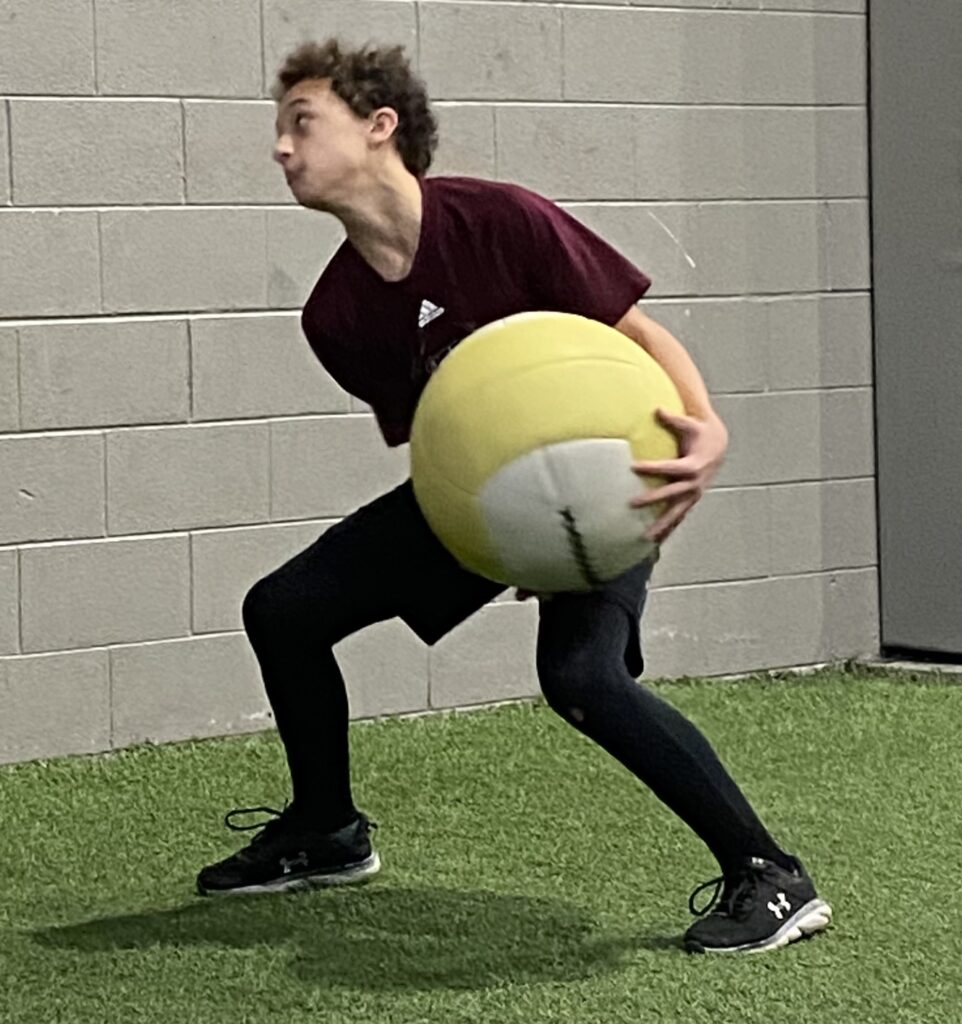
by Mitch Hauschildt, MA, ATC, CSCS
As my kids get older and more engaged and active in sports, I am more and more excited about my opportunities to work with them and enhance their performance and improve their resiliency. The age old question still exists of when should they start training and what should it look like?
It’s a difficult answer, because there are a lot of variables. We need to consider their age, maturity, athletic ability and time availability. The goal with young athletes should be to build lifelong fitness skills, make them more resilient and instill a work ethic. What we don’t want to do is to force them to train when they don’t want to, instilling a negative connotation that they associate with working out.
Rule 1: Mentality is key
My first rule with training young people is that they have to be mentally ready for it. I would be willing to do a few things with kids as young as 9 or 10, as long as they are interested and asking to workout. Most kids that age aren’t ready for to train. I also have attempted to train young men and women that are 15 or 16 who have no desire to be there and that point, we are probably doing more harm than good. Working out has to be THEIR choice, not ours.
Rule 2: Ensure Physical Maturity Prior to Loading
Assuming that they are mentally ready to workout, then we have to figure out how and when we are going to train them. Less mature athletes should stick to bodyweight movements and training patterns instead of loading them. I typically lean on the Tanner score to help me determine maturity level.
If you aren’t familiar with Tanner score, there are a lot of resources available online to help you with it. It’s a simple way of determining if or how far along in puberty a young person is. I usually like to see young people in the tanner 2-3 range before I start to load them with a bar, dumbbell, kettlebell or other implement. That isn’t a hard rule, but it is a good rule of thumb to make sure that I’m not adding load prior to their body moving through the hormonal changes associated with puberty.
Rule 3: Movements are More Important than Maxes
Regardless of where they are age wise or maturity level, the goal for young athletes with a low training age is ALWAYS to prioritize movements and not load. The only reason that I ever gather any kind of load data (typically an estimated max) is to demonstrate progress to the athlete. Young kids need to see progress to buy into the program. They aren’t motivated by their clothes fitting them differently or someone saying that they look different. They need to see data to continue to be motivated to train and train hard.
When I train young people, I want to see their basic movements of the squat, lunge, press, pull and rotate to be clean, efficient and ready for the time that it makes sense to add a significant load. There should also be a significant focus on quality movement skills such as sprint mechanics, change of direction skills and landing progressions. Further emphasis should be placed on midline stability and control. With all of these items in mind, there is more than enough training that can take place without worrying about maxes, percentages and egos.
Rule 4: Timing is imperative
Today’s young athletes are more squeezed for time than ever. Their seasons tend to overlap, they have school activities, and many work with private coaches. I have opinions on a lot of those topics, but I’ll save those for another time.
What we need to remember is that kids need their training to be efficient. I try to keep their workouts to 25-40 minutes at the most. This keeps them engaged and interested without burning them out. Get them in, get some good work done, and get them out. Resist the temptation to attempt to do everything all at once. Pick a priority for the day and go after it and prioritize something else the next time.
Also, with regards to timing, make sure you are fully aware of everything that young athletes are doing. Parents need to tell you about their various practices, training sessions and activities so you can plan accordingly and be strategic about when and where you work out. Our job is to create better athletes, not overtrain athletes.
Rule 5: Make it Fun
Kids want to have fun, so make sure there is time within their program for some fun. Mix in some games. Listen to their music. Laugh when you can. If they associate their workouts with fun, they will want to keep coming back, which is the goal.
Conclusions
The great thing about training athletes with a low training age (athletes who have little training history), is that their body reacts quickly and dramatically to training stimulus. So, even if your program isn’t perfect, they will see improvements. Simple things like body weight movements, jumping technique and some simple energy system development will result in increases in strength, stability and endurance.
The take homes are:
- Wait until they are mentally prepared to train and are requesting to train
- Wait until they are at least a Tanner 2-3 score prior to adding any load to their body
- Train movement patterns instead of worrying about big maxes
- Build enthusiasm and excitement about working out as a life long skill
- Collect some numbers in a safe manner so that you can show objective improvements to gain buy in
- Focus on injury prevention and resiliency
- Keep the workouts short and fun


Loved this, Mitch. Thanks so much!